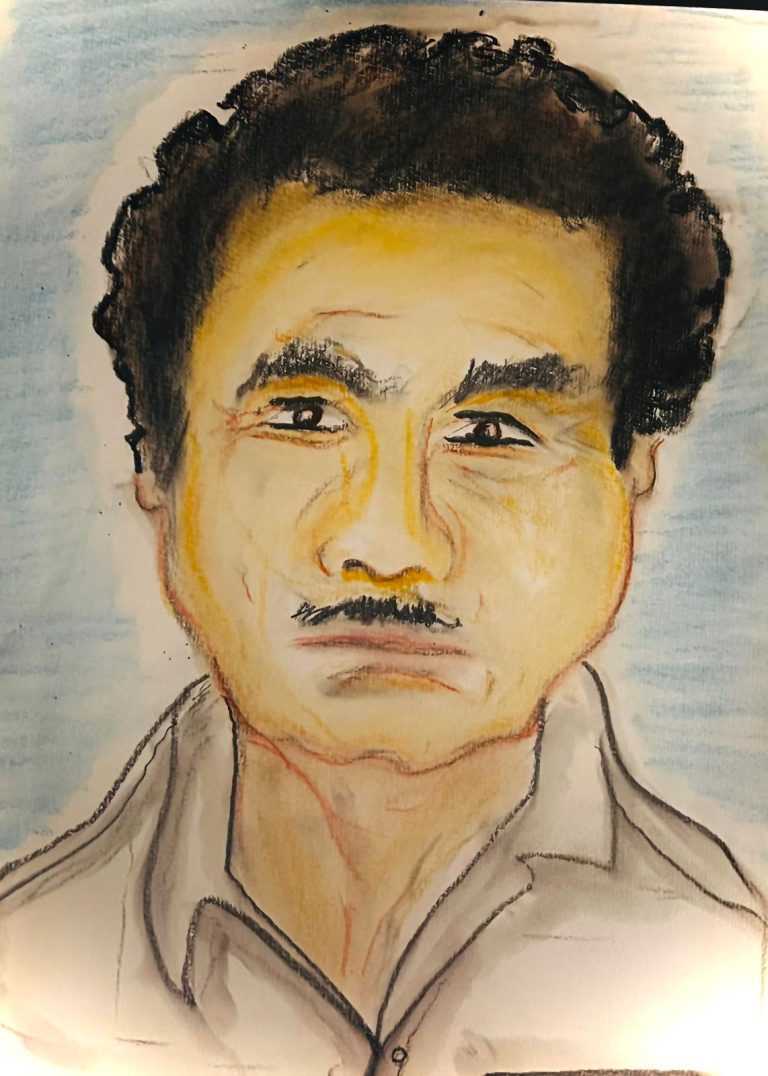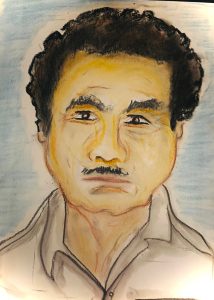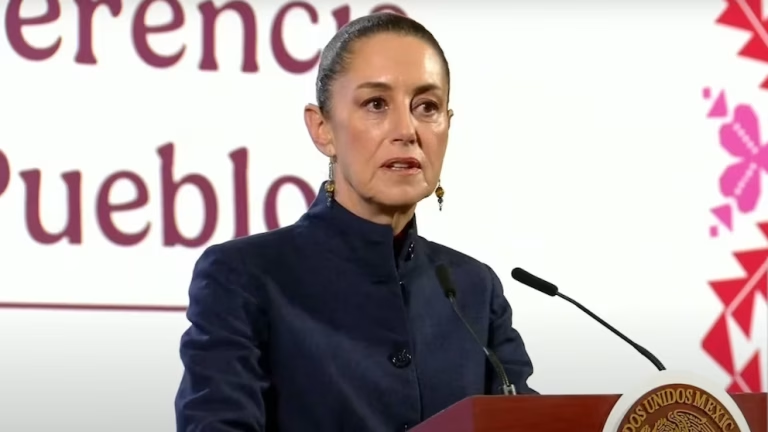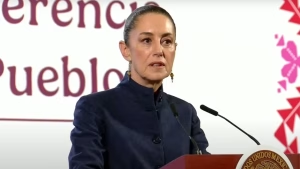
By Zaidee Stavely. EdSource via Bay City News.
Listen to this note:
In the early months of the first Trump administration in 2017, a father in Los Angeles was detained by Immigration and Customs Enforcement (ICE) after dropping off his 12-year-old daughter at school.
The domino effect was immediate.
“There was an immediate drop in attendance in Los Angeles schools because parents were thinking, ‘Oh, if I drop my kids off, ICE is going to pick me up,’” said Ana Mendoza, senior staff attorney at the ACLU of Southern California and director of the organization’s Education Equity Project. “The need for safety and sanctuary policies became really apparent because students weren’t attending school or families were hesitant about participating in school.”
In the wake of this year's presidential election, there is once again widespread uncertainty among immigrant families in California about what will happen next, given President-elect Donald Trump's promises of mass deportation.
State Attorney General Rob Bonta recently released updated guidelines and model policies on what elementary and secondary schools, colleges, and universities can and cannot do under state and federal law, regarding maintaining the privacy of immigrant students’ and their families’ data, when to allow an immigration officer onto campus, how to respond to the detention or deportation of a student’s family member, and how to respond to harassment or bullying of a student based on his or her immigration status. The original guidelines and policies were released in 2018 by then-Attorney General Xavier Becerra, after California passed Assembly Bill 699, which required schools to pass policies limiting collaboration with immigration authorities. Bonta is now calling on schools to update their policies.
“School districts should look at what their board policies are and make sure they are up to date and take all necessary steps to ensure families feel safe,” Mendoza said.
An estimated 1 in 10 California children, or 1 million, has at least one undocumented parent, and about 133,000 children in California public schools are undocumented, according to the Migration Policy Institute.
At California colleges and universities, an estimated 86,800 students are undocumented and about 6,800 employees at TK-12 schools, colleges and universities have temporary work permits and protection from deportation under Deferred Action for Childhood Arrivals, or DACA, according to the Higher Education Immigration Portal.
“Undocumented students, faculty, and staff fear for their safety, and this will impact their retention and enrollment in higher education if they don’t feel safe or feel targeted,” said Luz Bertadillo, director of campus engagement for the Presidents’ Alliance for Higher Education and Immigration, a national organization of university leaders. “It’s important for campuses to take a strong stance on what they’re doing to support undocumented students, or at least let their students know that they’re thinking about them and that they’re taking steps. While they can’t guarantee their safety, they’re at least taking those steps to protect them.”
What rights do immigrant students and their families have in school and university, regardless of their immigration status?
The right to attend public school
All children in the United States, regardless of immigration status, have the right to attend public school. In 1982, the Supreme Court ruled in Plyler v. Doe that states cannot deny students a free public education based on their immigration status or the immigration status of their parents or guardians. Some states (including California in 1994 with Proposition 187) and school districts have since attempted to pass laws that would deny enrollment to students who did not have valid immigration status or report their status to law enforcement, but all of these laws have been struck down by the courts.
California schools cannot request or collect information about Social Security numbers, immigration status, or U.S. citizenship when enrolling students. Students and parents do not have to answer questions from schools about their immigration status, citizenship, or whether they have a Social Security number.
“This often comes up in student document requests,” Mendoza said. “I once had a case where a parent presented their passport during registration and the person at the front desk asked for a visa. No. The school does not have the right to ask for documents about citizenship or immigration status.”
Schools may ask for certain information, such as a student's place of birth, when the student first came to the U.S., or attended school in the U.S., to determine whether a student is eligible for special federal or state programs for newly arrived immigrant students or English learners. However, parents are not required to provide this information to schools, and schools cannot use this information to prevent children from enrolling in school. The Attorney General's Office suggests that schools should collect this information separately from student enrollment.
Privacy of school records
The Family Educational Rights and Privacy Act (FERPA) prohibits schools from sharing students' personal information in most cases with other agencies or organizations, including federal immigration authorities. The law requires schools to obtain consent from parents or guardians before disclosing any student information to another agency or organization or, if the student is 18 or older, schools must obtain consent from the student.
However, in some cases, schools may be required to provide information without consent in response to a court order or subpoena.
Colleges are also prohibited from sharing information, except in certain cases. Bertadillo said her organization recommends that college leaders talk to all the different departments that might handle information about students’ or families’ immigration status — such as information technology, admissions, registration and financial aid — to review their data storage or sharing practices.
“We hear that some campuses have citizenship status on their transcripts and those transcripts are sent to graduate schools, to jobs, and that’s essentially revealing the identity of the students,” Bertadillo said.
He said it's important for colleges and universities to approve or revise procedures on what to do if immigration officials request data or try to enter a campus.
“Many institutions created them in the Trump 1.0 era. We recommend that they reaffirm or revise them, so that the campus knows that they are current,” Bertadillo said.
Safe haven at school
The Department of Homeland Security has designated schools and universities as protected areas where immigration enforcement should be avoided as much as possible. President-elect Trump has said he may rescind this policy.
In the event that ICE agents enter schools or ask to question students, the attorney general's guidance says school staff should ask the agents for a warrant. Without a warrant, school staff are not required to give an ICE agent permission to enter the school or conduct a search, or to provide information or records about a student or family, the guidance says.
A bill introduced by state Sen. Lena Gonzalez, D-Long Beach, and state Superintendent of Public Instruction Tony Thurmond would establish a 1-mile “safe zone” around schools and prohibit schools from allowing ICE onto a campus or sharing information without a warrant.
Under California law, schools must notify parents or guardians if they turn a student over to a law enforcement officer, except in cases of suspected child abuse or neglect.
California law does not require schools to notify parents or guardians before law enforcement officers question a child at school, but it also does not prohibit schools from notifying them. The California Attorney General suggests that school districts and charter schools should create policies requiring notification to parents or guardians before a law enforcement officer questions or expels a student, unless that officer has a court or judicial order.
Additionally, the attorney general says that if a police officer or immigration agent attempts to enter a school or speak with a student for immigration enforcement purposes, the superintendent or principal must email the California Department of Justice's Office of Children's Justice.
“Schools should retrain their staff on their visitor management policies, to ensure that everyone who enters campus, including law enforcement, is questioned about what their purpose is, and that school staff are trained on what to do if law enforcement asks to see information about students or staff,” Mendoza said.
School support if a family member is detained or deported
If a student reports that his or her parents or guardians have been detained or deported, California law requires the school to follow the parent’s instructions about who to contact in an emergency. The attorney general’s guidance says that “schools should not contact Child Protective Services unless the school is unable to arrange for the child’s care through the emergency contact information.”
The guidance also suggests that schools should help students and family members contact legal assistance, their consulate, and help them locate detained family members through ICE's detainee locator system.
Mendoza said it's important to note that if a student's parents are detained or deported and as a result have to go live with another family member, they are then eligible to receive homeless student support under the federal McKinney-Vento Act.
Protection against discrimination and harassment
Federal law prohibits discrimination and harassment based on race, national origin, color, sex, age, disability, and religion. California's AB 699 law also made immigration status a protected characteristic, meaning schools must have policies prohibiting discrimination, harassment, and bullying based on immigration status.
Mendoza said it's important for families and students who experience bullying or harassment to know they can file complaints through their schools or with different agencies in California. “There are advocates available to support them if their schools are not acting in accordance with best practices or the law,” Mendoza said.
Free lunch, subsidized child care and special education
In California, all students are entitled to a free school lunch starting in the 2022-23 school year. Additionally, some students whose families are considered low-income qualify for subsidized child care, either full-day for infants and preschoolers, or after-school for school-aged children. Students with disabilities are entitled to special education to meet their needs, under federal law.
Immigrant families are often afraid to apply for public benefits because they worry that this will be counted against them when they apply for permanent residency. This is largely due to the “public charge” test, which immigration officials use to determine whether green card applicants are likely to rely on public benefits.
Currently, immigration officials can only consider whether applicants have used cash assistance for income, such as SSI or CalWORKs, or long-term institutional care paid for by public insurance, such as Medi-Cal. They don’t consider school lunch, child care or food stamps. And officials can’t examine whether applicants’ relatives, such as children of U.S. citizens, use public benefits. During the first Trump administration, the president changed this policy to include relatives and some other benefits. It’s unclear whether he will try to change this again in the future. However, even with the changes during his first term, school lunch and child care were not included.
In-state college tuition and scholarships
Under the California Dream Act, undocumented students are eligible for in-state tuition and state financial aid at California colleges and universities if they attended high school for three or more years or earned credits at a community college or adult school and graduated from high school or earned an associate degree or met minimum transfer requirements at a California community college. The number of students applying for the California Dream Act has plummeted in recent years.
Read the original note giving click here.
You may be interested in: Equity, inclusion and diversity in schools are at risk under Donald Trump




















